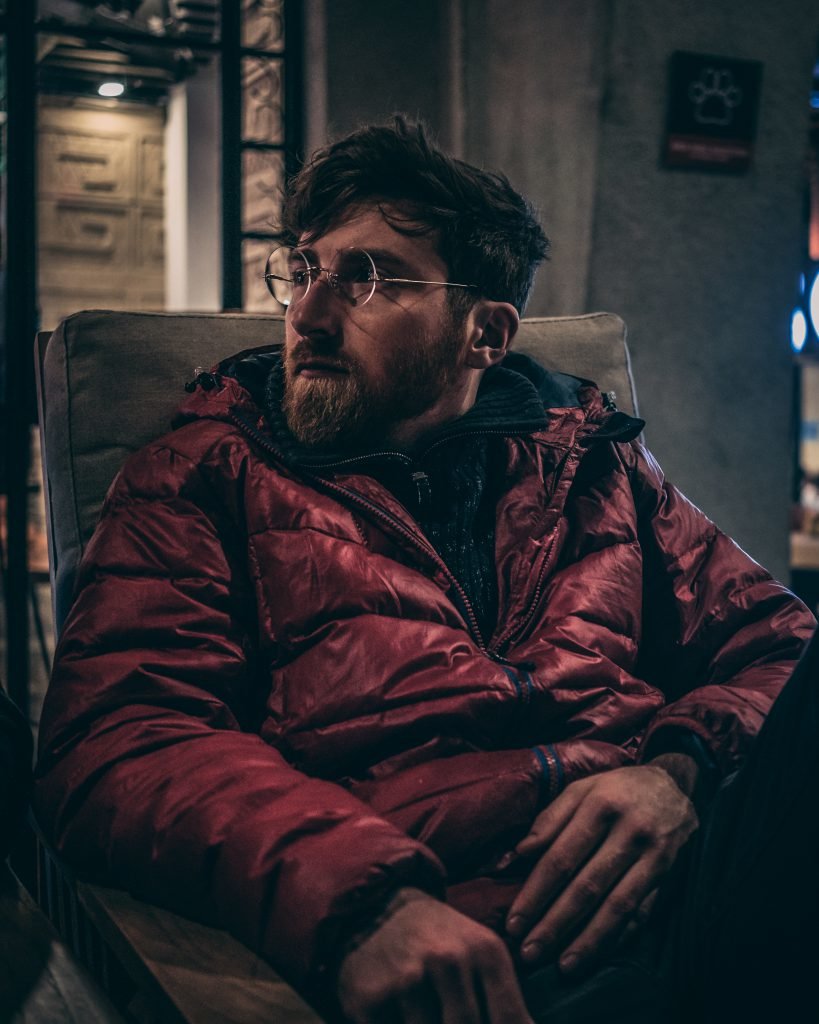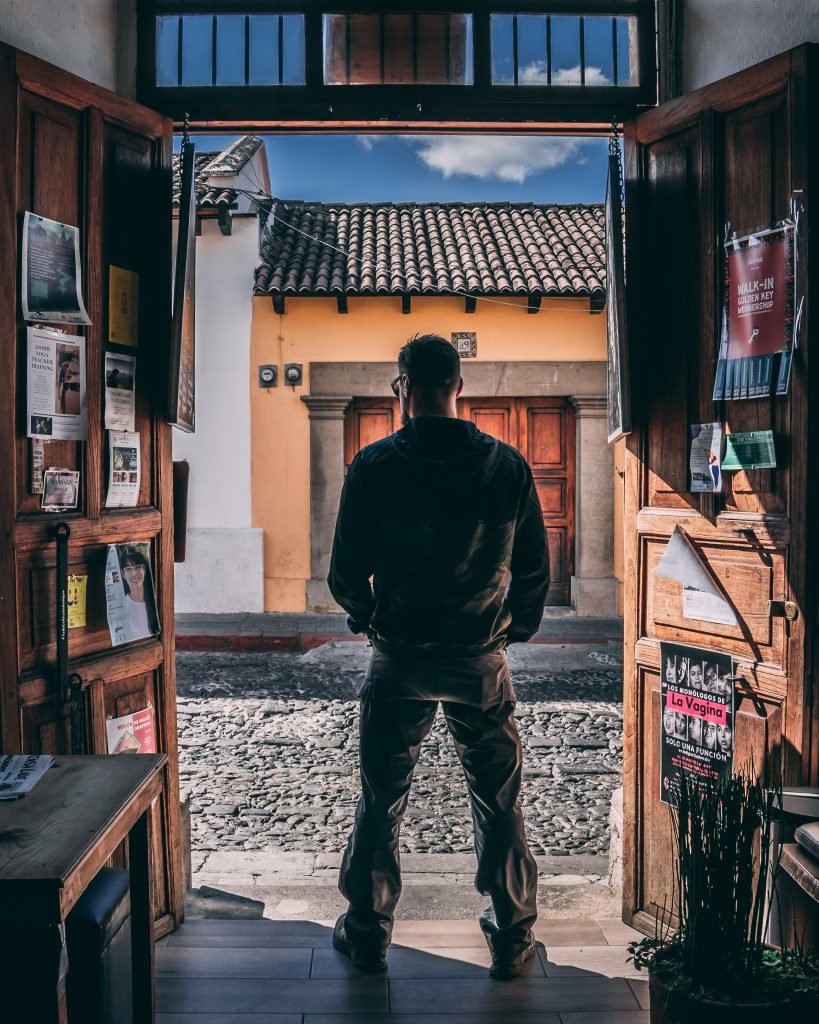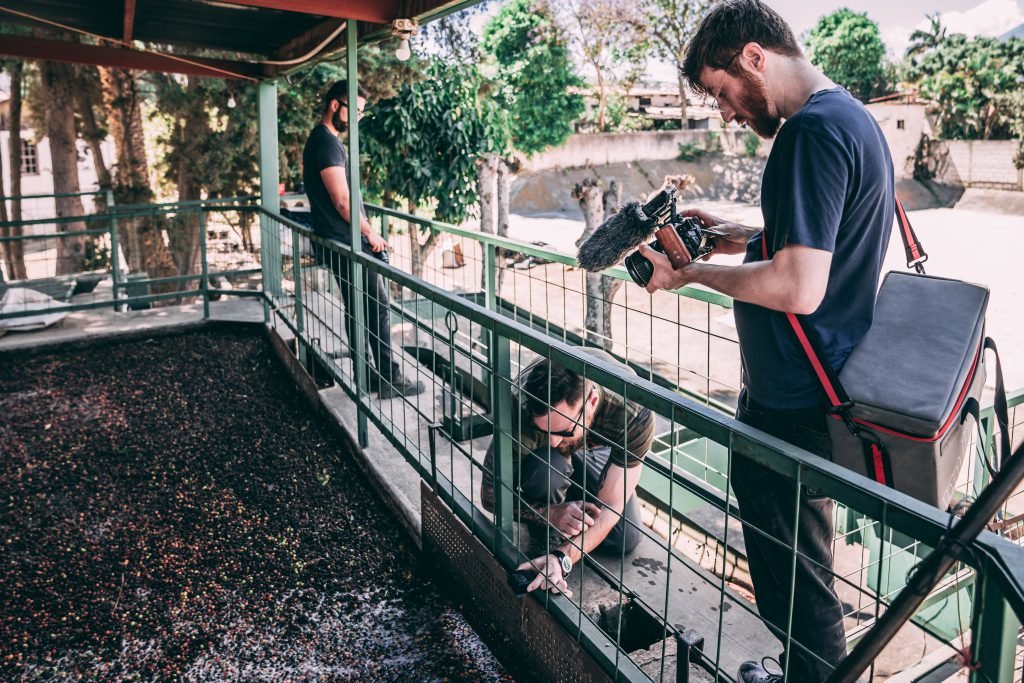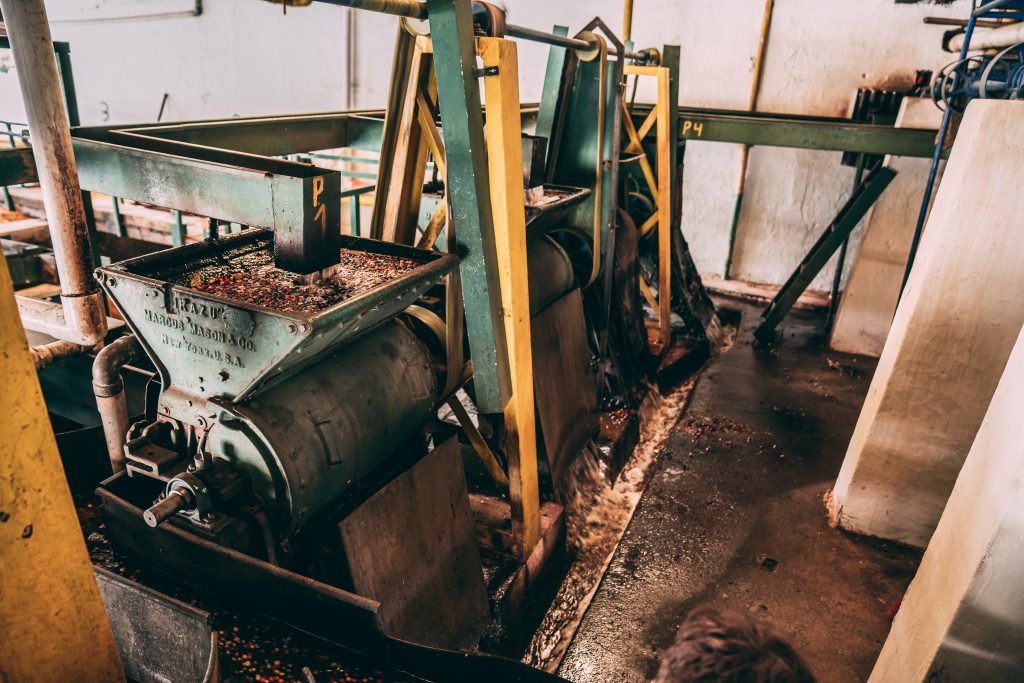From Field to Cup: The Search for Great Coffee in Antigua, Guatemala

Photo by Marty Skovlund Jr./Coffee or Die Magazine.
Great coffee doesn’t happen on accident. For Black Rifle Coffee Company, the process of providing great coffee to our customers doesn’t start at the roasting machines or the shipping facility. It starts in coffee country.
Coffee country doesn’t refer to any one country, but most of the coffee-producing areas of the world are in developing nations where a good season can mean the difference between entire communities having enough money to put food on the table — or not. It’s important to meet the producers on the ground, to run our fingers through the dirt in the fields where coffee is grown, alongside the men and women who pick, wash, and dry it.
It’s important to know where our coffee comes from.

We arrived in Guatemala City, Guatemala, where our local contact, Fredy Bolanos, picked us up from the airport and dropped us off at our base camp: the ritzy, Western-friendly, touristy neighborhood of Cayala. He gave us a time hack to drop our bags and get back down for dinner where we’d have a chance to talk about the coffee hunting itinerary ahead of us. Cayala is nice but didn’t feel like authentic Guatemala. But we were travel weary, so maybe dipping our toes in on the first day was a better course of action then jumping in headfirst.

Fredy is a coffee hunter. More specifically, he’s a coffee broker and exporter. Although he’s passionate about coffee, I’d argue that the most accurate way to describe him is as an entrepreneur and a motivated go-getter. A self-made man who doesn’t quit. Except for that time he quit medical school to become a CrossFit coach, then a baker. Like most self-made men, he took a few swings before he found his groove. But his hustle was evident from the minute we met. We were in good hands.
Logan Stark is a former US Marine Corps scout sniper and Black Rifle Coffee Company’s editor-in-chief. As one of the company’s first hires, Logan knows his way around a cup of coffee. And this wasn’t his first time in Central America. He was the senior man on the ground from BRCC that night and leading our mission to figure out where the good stuff was — and capture a great story along the way.

That’s why he brought Carmichael along. You might know him from the popular YouTube channel Corridor Digital. He’s a master of visual storytelling and is as skillful behind a camera as he is in front of a Dungeons and Dragons board. They use boards in that game, right?
He’s also a vegan, but we only held that against him a little bit. The important thing was that he would be able to capture our hunt for coffee and then distill it down into a documentary format that is equal parts entertainment and education. He had his work cut out for him.

And then there was me. My name’s Marty. I used to be in the Army, but now I rearrange words and pictures for a living. I also drink a lot of coffee. But the real reason they brought me along was for my good looks.
Well, that’s a lie.

Together, the four of us drank Gallo, a local Guatemalan beer with a rooster on the bottle, out on a second-floor patio. It was a cool evening, and Fredy explained that we’d be headed to Antigua the next day, an old city nestled high up among the volcanoes. It didn’t take long for us to start calling our drink the Cock Beer. It didn’t take long for a “lady of the night” to, uh, solicit us for her services. We declined, but she had a cute dog, so we gave him a few pats on the head and a scratch behind the ear. He was a good boy.
Despite the early morning ahead of us, we drank a lot of cock beer that night and told many lies about past exploits. This was going to be a fun trip.

The next day we slid into Fredy’s SUV and began the 40-minute drive into “real” Guatemala. We left the polished streets and fancy buildings of Cayala in the rearview mirror and quickly found ourselves surrounded by massive decorative buses (reminiscent of the “jingle trucks” Logan and I used to see all over Afghanistan) with Guatemalans zipping by us between lanes on motorbikes during their morning commute. It was an early wake-up so we only had time for hotel coffee but looked forward to the good stuff in Antigua.
“I wanna figure out how to get better coffee and a bigger variety of coffee in the Exclusive Coffee Subscription,” Logan explained. “We wanna cup some coffee, talk to these people, and bring back those green beans to the US. […] Get that complete picture from field to cup, and give people who love Black Rifle Coffee a really cool story about where that’s coming from.”

Antigua sits on the central highlands of Guatemala, in the shadow of the nearby Volcan de Agua. This was the original Guatemala City. In fact, Antigua actually translates to “Old Guatemala.” Its cobblestone streets and perfectly preserved Spanish-Baroque architecture make you feel as if you’ve stepped backward in time, where the Kaqchikel Maya fought the conquistadors, and earth, water, and fire constantly threatened life in the valley. It’s the perfect destination for those seeking adventure, coffee, and chocolate — but also good cellphone reception to post selfies to Instagram. If I’m being honest, I can’t really blame the Instagrammers. This was one of the most beautiful cities I’ve ever stepped foot in.

We were under-caffeinated, so we ducked into the Fat Cat Coffee House. They do micro-lots, buying specialty coffees from around Guatemala. In fact, they’re one of the pioneers of specialty coffee in the country, and one of the “best coffee shops in Antigua” according to Fredy.

Ericka Lopez, the barista manning the counter, greets us with a smile and cheerful “Hola! Buenas!” Lopez lives locally and knows good coffee. Logan was raised in Michigan but lives in Texas, and as such knows a bit of Spanish. And by a little bit, I mean he rattles off some Spanglish with a Texas twang, accompanied by the classic Hot Logie™ smile. Fredy stepped in before the ol’ devil dog could butcher their language much more. To be fair, my upper Midwest take on Spanish is much worse than Logan’s. Either way, Ms. Lopez was likely accustomed to tourists coming in and taking a swing with their best recollection of 10th grade Spanish.

The coffees available were nothing less than impressive. Lopez showed us a buffet of high-end offerings, but we went with a naturally processed yellow catuai and a natural red bourbon. They had a syphon available, which is on the more exotic end of brew methods. We ordered a few cups of that, along with espresso shots and a few rounds of pour over via Chemex to finish us off. This may seem like a lot, but we wanted to see what this place had to offer.

Many of the coffees the Fat Cat Coffee House sources are local to Antigua. Like Champagne from France, bourbon whiskey from Kentucky, or vodka from Russia, Antiguan coffee carries a reputation of excellence. In fact, in order to label a coffee bean as Antiguan, it requires certification from the Antigua Coffee Producers Association (APCA).
But what makes coffee from Antigua so special? The volcanic soil from the three volcanoes — Agua, Fuego, and Acatenango — towering above us make for a unique growing process that injects more nutrients into the coffee plants and thus produces a better coffee bean. Volcan de Fuego, one of the most active volcanoes in the world, adds a fresh layer of mineral-rich ash to Antigua’s soil every so often. That volcanic pumice retains moisture, which helps offset the low annual rainfall. Nights can be cold, but the shade from dense vegetation protects the plants from the region’s occasional frost. To top it all off, the low humidity and plentiful sun create the perfect coffee growing environment.

The coffee at Fat Cat lives up to its reputation. The complexity in each sip was obvious to even a coffee novice like myself. We rotated through every cup, each method of brew, and compared notes. Fredy and Logan have a more developed palate than Carmichael and I, and as such picked up on notes that flew over our heads. But it’s a learning experience and part of what makes going down the coffee rabbit hole fun.
As is always the case with a good cup of joe, it’s just as much about the black liquid caffeine as it is where you are and who you’re with. Here we were in a small shop on an ancient street: a Guatemalan entrepreneur, a vegan filmmaker, an oversized writer, and a soft-spoken content guru. We all drank from the same cup, both literally and figuratively, the taste of the drink filtered not through paper but our own unique life experiences. Revolutions have been born at coffee tables not unlike the one we sat at inside the Fat Cat. I’m not trying to be melodramatic here, but if you don’t know what it’s like to have a good coffee experience hit you right square in the soul, then I feel sorry for you, friend.

Caffeinated and hungry for the day, we were anxious to see where this magic elixir came from. We wanted to go to the source. With a hardy, Americanized “Gracias!” directed at Ms. Lopez, we stepped back out onto the sun-drenched pebble stone. The farm was only a few minutes away.

We nodded to the guard as our vehicle rolled forward. He nodded back. His pump shotgun with a shiny nickel finish need not say anything. The gate to Finca el Potrero opened, and we drove into a beautiful farm compound accentuated by traditional German architecture that stood in contrast to the Spanish influence the rest of Antigua was dripping in.
Juan Carlos Velazquez inherited this farm from family. He and Carlos Morales, the farm administrator, greeted us with firm handshakes and a welcoming smile. I grew up in South Dakota and can spot an honest-to-God farmer from a mile away. These men were farmers — and they had the calluses on their hands to back it up.

Finca el Potrero has been in the family since 1898, passed from generation to generation, but didn’t start growing coffee until 1928. It rests on the slopes of the Volcan de Agua at 5,000 feet above sea level and boasts 175 acres of fertile coffee plants and impressive processing facilities. They grow certified genuine Antigua coffee, specializing in Bourbon, Caturra and Catimor varieties. The farm has both a wet and a dry mill, and the coffee is dried on patios. They produce 1,600 quintals of coffee a year, or roughly 160,000 kilograms, and export it to locations around the world — including the United States.

As we walked row after row of cherry-laden plants, I received an education on both the science and art of coffee farming. Red is ripe, green is not ripe, and yellow is rare. We picked cherries and used our teeth to squeeze out the sugary sweet bean inside. I had no idea how delicious coffee right off the branch was. I could snack on these treats all day, I thought. After being picked, these cherries will be sent in for the first step of processing: washing.

Washed coffee is how most coffee is produced around the world, though naturally processed coffees follow a different regimen. The process focuses on highlighting the truest character of a single-origin bean, allowing you to taste more of its terroir, or character, once the final product hits your cup. We walked on narrow paths over cherries submerged in water, marveling at the sheer volume of coffee being produced.
Part of our job on these “origin trips” is to capture coffee and the story behind it. That means each of us will have our cameras out at all times, trying to find the perfect angle and most visually stimulating way to capture what we were seeing with our own eyes. Logan dipped his GoPro in and out of the water, Carmichael moved his camera back and forth from the pools of coffee to Logan, simultaneously asking him questions to provoke narration of the experience that could be used later. I stood at an angle to both of them, snapping photos. It was a camera circle-jerk, or even a storytelling orgy — and the floors were sticky.

Coffee cherries are selected according to their density and ripeness, which is determined by color. Bright red or burgundy are separated from the green. These cherries will then go into the de-pulping machine to be de-pulped. I don’t care what anyone thinks, that’s a fun word to say.

More than 300 people are employed at this farm. They even operate a school on-site so that kids can go to school while their parents work. The emphasis on community was palpable; Finca el Potrero seemed like the sort of place where both worker and owner benefited. Seeing this firsthand is exactly why it’s important to make trips like this. Who Black Rifle Coffee Company buys coffee from matters as much as the coffee itself. Are the producers good people that share our values? In this case, it seemed so.

The de-pulping machines hailed from New York, transplanted from an era of peak manufacturing and industry that now seems distant in contemporary America. These green machines stripped away the skin and sugars, separating the bean from everything else. This is the third major step in the process of producing coffee.

The cherry and sugars — collectively known as coffee pulp — are moved to a massive holding area after being separated from the beans. This pulp is later recycled as fertilizer for the coffee plants, a fact that Juan Carlos seemed very proud of. I don’t blame him.

After de-pulping, the beans are washed again as they move through large troughs. They can be left in water for up to 18 to 24 hours during this phase of the process. The sun had moved high in the sky as we toured this part of the farm, so we stripped off our jackets and started working on a tan. Or in my case, a sunburn.

By the time this fermentation process is done, the bean will be golden and in parchment, ready to be dried. Workers stand perched over the troughs holding long rods used to stir and move the beans. One wore a Star Wars shirt, the other a New York Yankees ball cap. They didn’t speak much English, and I don’t speak much Spanish, and although I try not to judge people based on their clothing alone, I made an exception: these guys were clearly humans of the highest caliber and have excellent taste in sports teams and cinema.

The last stop for the new beans is the patio, where they will dry in the sun. Juan Carlos is the last stop for quality control. He spot-checks every aspect of the process to ensure only the best green beans are leaving his farm, up to and including the beans sprawled across massive patios. Like most farmers, he cares about his land, his people, and his product. The rest of us benefit from him and producers like him every morning as we sip our daily mug of coffee — black, thank you very much.

Fredy knocked our first day of the coffee hunt out of the park. Logan seemed to be in his element among the plants and the people who cultivated them. But like I said, the sun was high. There was a rumor about cold, fresh-squeezed lemonade waiting for us back at the main farmhouse, and that’s not an offer you turn down.

The Finca el Potrero is one of thousands of coffee farms both big and small across Guatemala. There is no official data on the total number of producers in the Antigua area, but the APCA has more than 40 on its rolls. Yeah, you’ll pay a little more for this coffee, but it’s supporting good people doing honest work. I’d be proud to pour Juan Carlos’ coffee in my cup.
Good coffee, good company, and a pitcher of damn fine lemonade. What more could we ask for?
Some traditional Guatemalan food, please. Some spicy dip for the chips, too, if you can manage.

Fredy says he knows a place. Fonda de la Calle Real is in downtown Antigua, he says. They specialize in traditional Guatemalan food. They have spicy chip dip. Oh, and they have cock beer, too? This is heaven, and I’ll fight you if you disagree.

Logan asked for the spiciest dip available, and Carmichael negotiated for the closest thing to a vegan dish they could conjure up. I ordered a bunch of meat because I didn’t want all those cows and chickens to die in vain. It’s the moral thing to do.
As much fun as we’d had so far, the day was only half over. We still had to drive out to Volcan de Fuego, one of the most active volcanoes in the world, to get some drone shots. That’ll be fun, I thought.

Marty Skovlund Jr. was the executive editor of Coffee or Die. As a journalist, Marty has covered the Standing Rock protest in North Dakota, embedded with American special operation forces in Afghanistan, and broken stories about the first females to make it through infantry training and Ranger selection. He has also published two books, appeared as a co-host on History Channel’s JFK Declassified, and produced multiple award-winning independent films.
BRCC and Bad Moon Print Press team up for an exclusive, limited-edition T-shirt design!
BRCC partners with Team Room Design for an exclusive T-shirt release!
Thirty Seconds Out has partnered with BRCC for an exclusive shirt design invoking the God of Winter.
Lucas O'Hara of Grizzly Forge has teamed up with BRCC for a badass, exclusive Shirt Club T-shirt design featuring his most popular knife and tiomahawk.
Coffee or Die sits down with one of the graphic designers behind Black Rifle Coffee's signature look and vibe.
Biden will award the Medal of Honor to a Vietnam War Army helicopter pilot who risked his life to save a reconnaissance team from almost certain death.
Ever wonder how much Jack Mandaville would f*ck sh*t up if he went back in time? The American Revolution didn't even see him coming.
A nearly 200-year-old West Point time capsule that at first appeared to yield little more than dust contains hidden treasure, the US Military Academy said.












